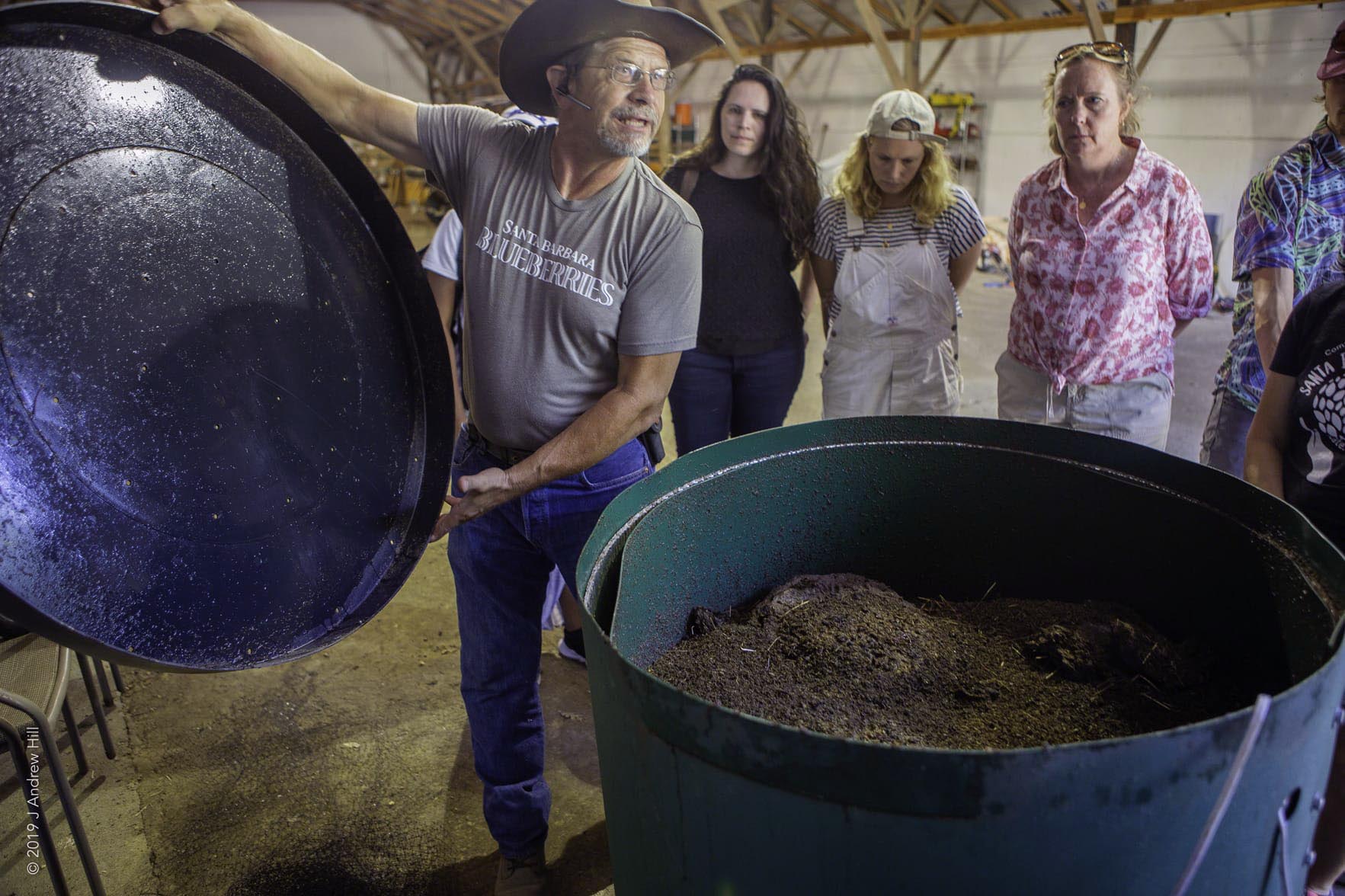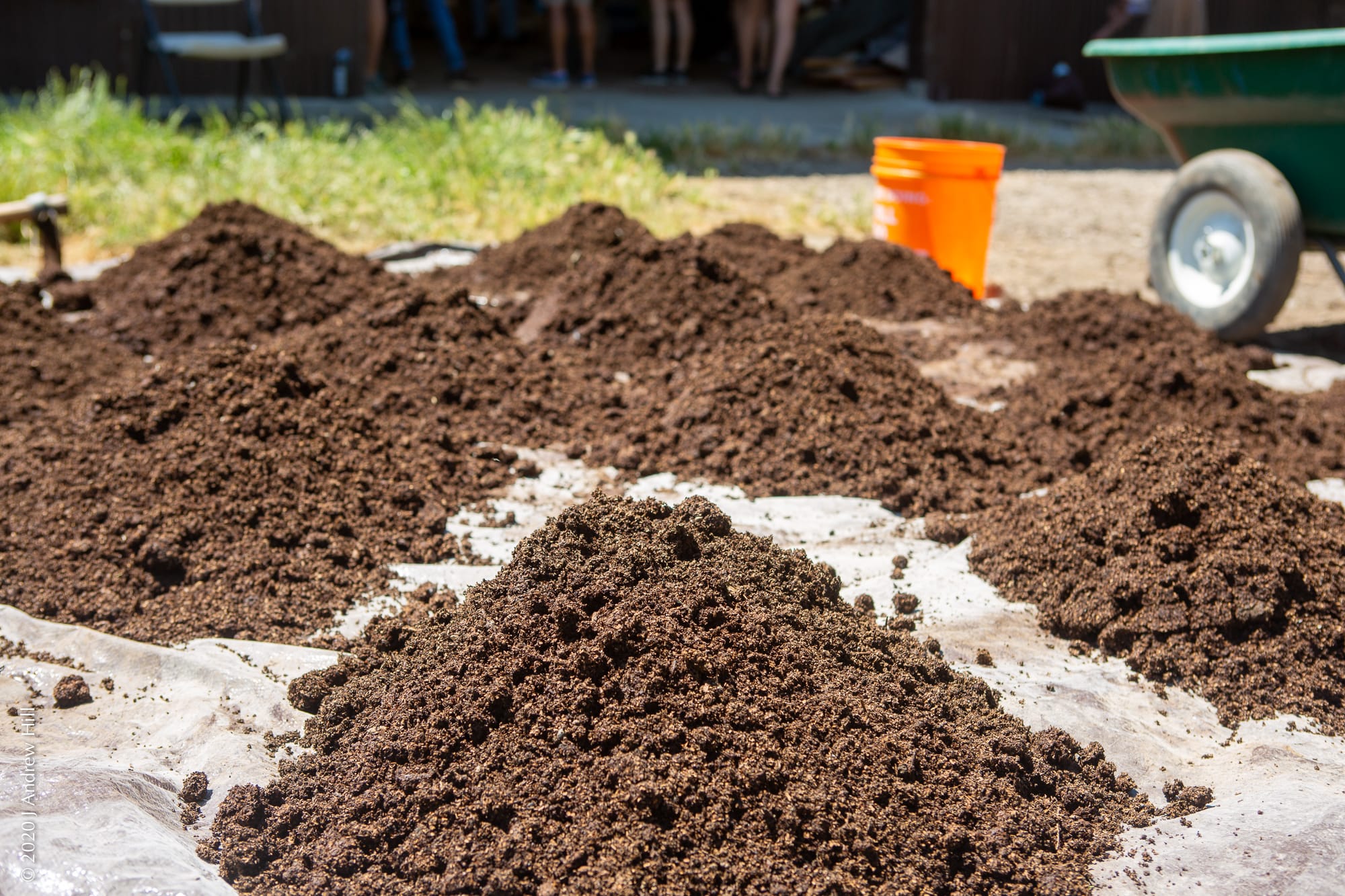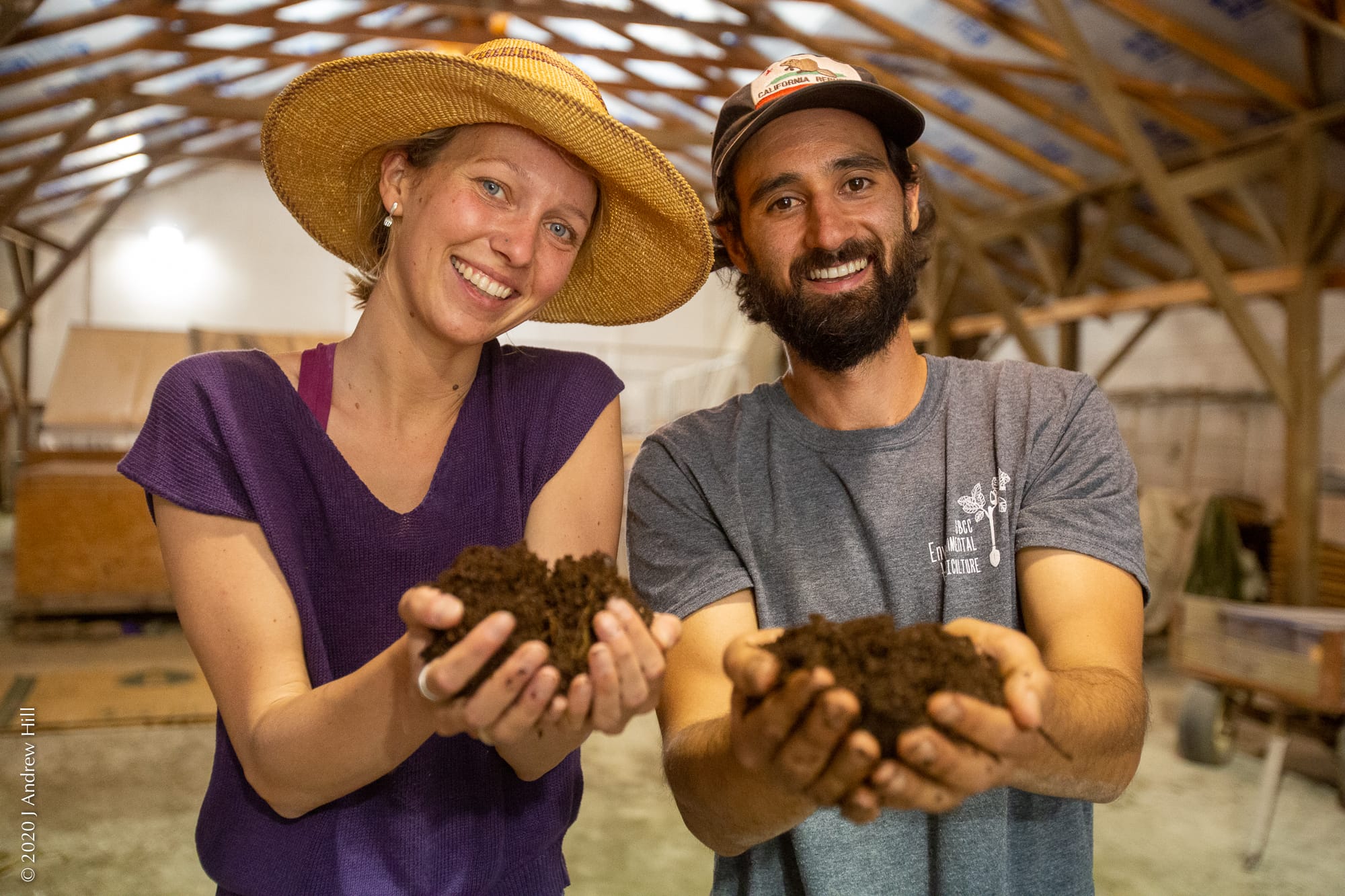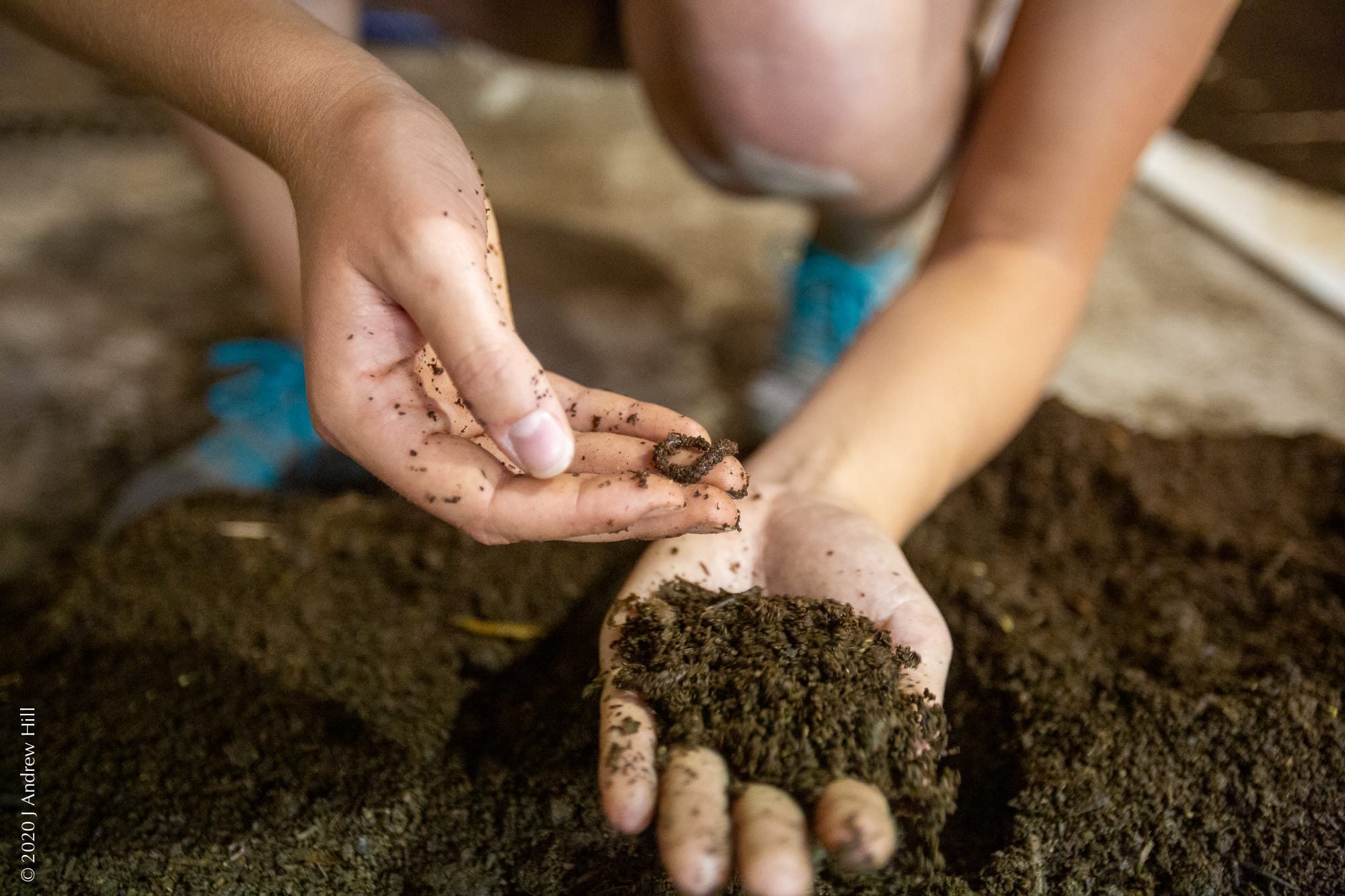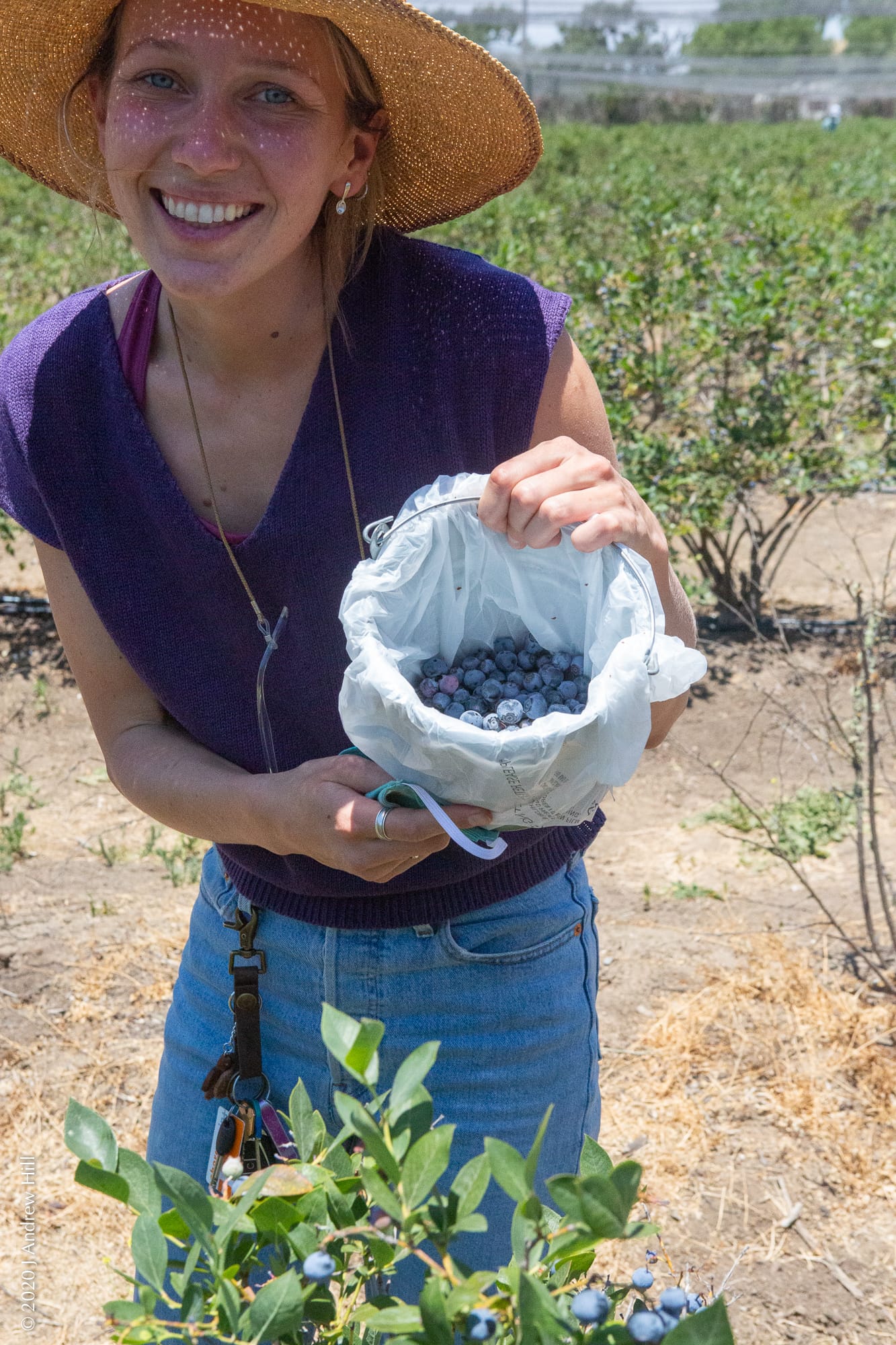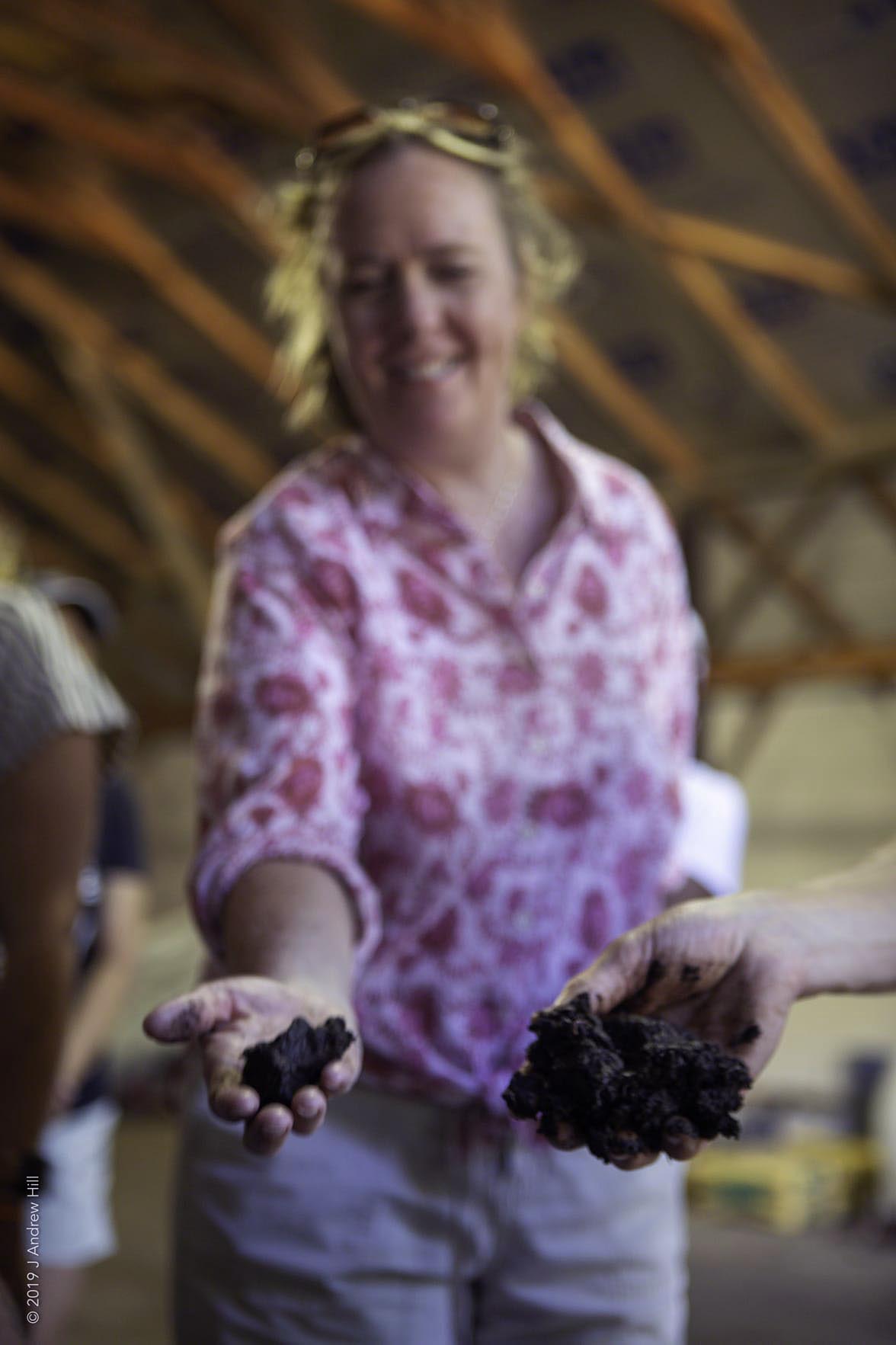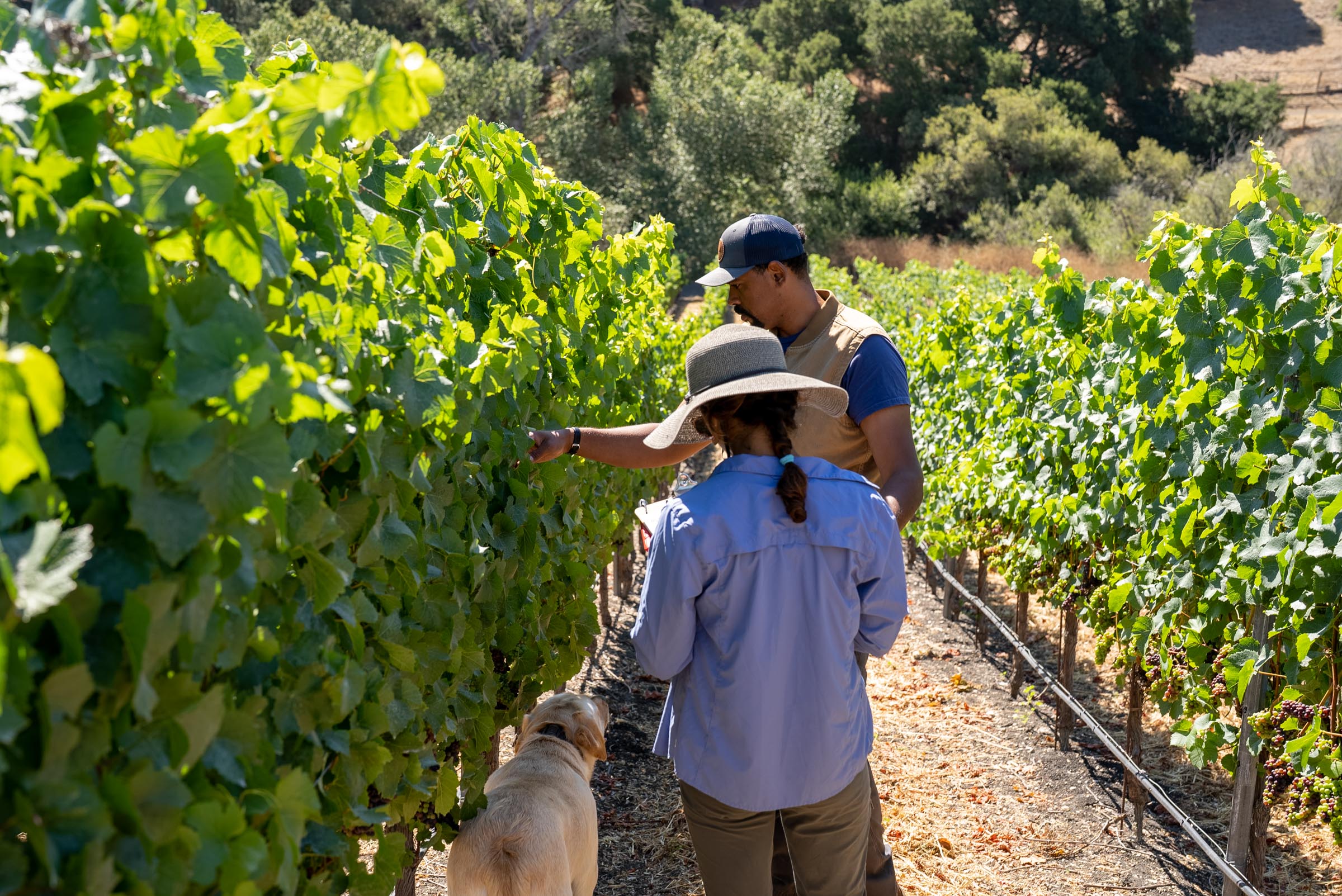Nestled in the verdant hills of the Santa Ynez Valley, just past the Gaviota Tunnel is Restoration Oaks Ranch, a 955-acre family-owned property featuring wild oak woodlandsOak Woodland: A plant community with a tree canopy dominated by oaks. Oak woodlands are the intermediate ecosystem between oak savanna and oak forest., cattle-grazing grasslands, and 30,000 blueberry plants. The Ranch is home to Santa Barbara Blueberries, which hosts seasonal u-picks for the public, and the Wild Farmlands Foundation, a nonprofit organization dedicated to agroecologyAgroecology: Agroecology is sustainable farming that works with nature. Ecology is the study of relationships between plants, animals, people, and their environment – and the balance between these relationships. Agroecology is the application of ecological concepts and principles in farming. education and sustainable land regenerationEnvironmental Regeneration: The systems of growing food that reclaim carbon and nutrients on the land by increasing biodiversity, building soil health, and improving watersheds to produce healthier food and lessen the impacts of climate change..
As a steward of the land, Santa Barbara Blueberries owner and Wild Farmlands Foundation Executive Director Ed Seaman’s philosophy is simple: to work in harmony with the ecosystem rather than make a significant footprint – and impact – on the land. “We should be part of what regenerates naturally,” explained Ed, “supporting the health of the land so that it can produce nutrient-rich food for our community.”
Since 2019, Restoration Oaks Ranch, Wild Farmlands Foundation, and the Community Environmental Council have been piloting a vermicast project to demonstrate how a closed-loopClosed-Loop System: As opposed to a linear food system that follows consumption of food from field to plate to waste, a closed-loop food system is a more sustainable model that follows food from field to plate to field with little or no waste. regenerative system can reduce greenhouse gas emissions and create nutrient-rich organic matter to build healthy soil. According to Ed, “The secret sauce of vermicast is using worms to break down organic food wasteFood Waste: Refers to food that completes the food supply chain up to a final product, of good quality and fit for consumption, but still doesn’t get consumed because it is discarded, whether or not after it is left to spoil or expire. Food waste typically (but not exclusively) takes place at retail and consumption stages in the food supply chain., transforming it into nutrient-rich ‘black gold’ that regenerates the soil and draws down carbon from the atmosphere.” As droughts intensify in our region, a healthy soil microbiome is critical to maintaining – and increasing – the productivity of food-producing land. Through this project, Seaman and his partners have demonstrated that applying vermicast helps the ground retain more water and provides the soil and the root zone with exactly what it needs to effectively and efficiently uptake nutrients without the use of fertilizers.
Read more about the success of the vermicast pilot project – and take a guided nature tour or visit the U-Pick berry farm June-October to harvest your own fresh blueberries, raspberries, and blackberries.
